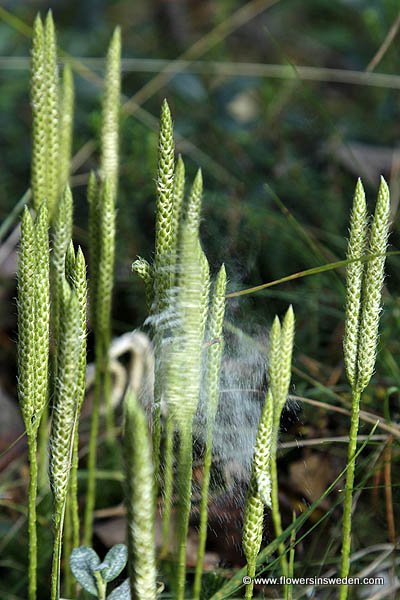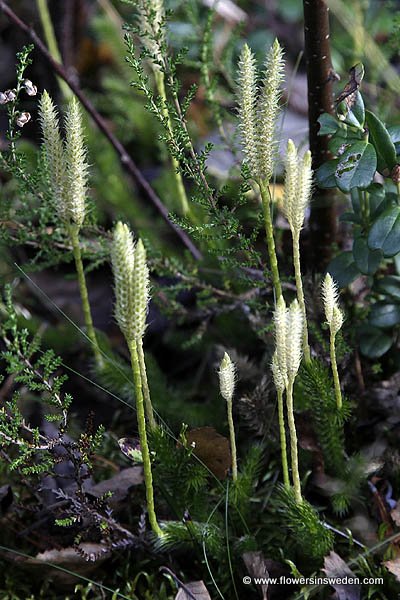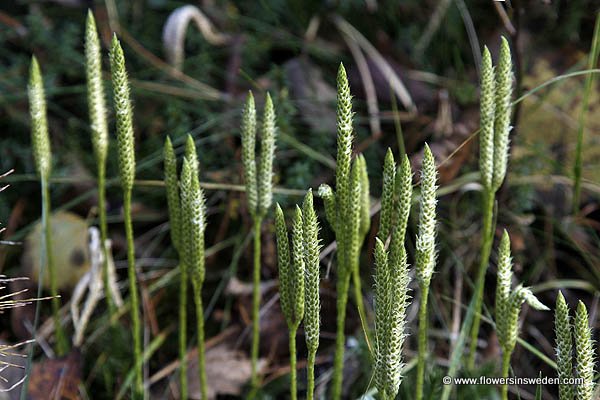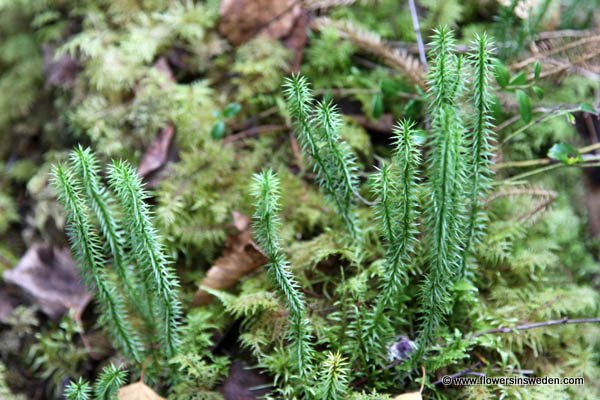
| Scientific name: | Lycopodium clavatum L. | |
| Swedish name: | Mattlummer | |
| German name: | Keulen-Bärlapp | |
| Nederlandse naam: | Grote wolfsklauw | |
| English name: | wolf's-foot clubmoss, stag's-horn clubmoss, Running Ground Pine, | |
| Plant Family: | Lycopodiaceae, clubmosses, Lummerväxter |

|
| Life form: | spore-bearing vascular plant | |
| Stems: | Up to 1 m long; much branched, densely clothed with small spirally-arranged leaves; branches bearing spore cones turn erect, reaching 5-15 cm above ground, and have fewer leaves than the horizontal branches; horizontal stems produce roots at frequent intervals along their length, allowing the stem to grow indefinitely along the ground. The stems superficially resemble small seedlings of coniferous trees | |
| Leaves: | 3-5 mm long and 0.7-1 mm broad, tapered to a fine hair-like white point | |
| Flowers: | Reproducing by spores; the spore cones are yellow-green, 2-3 cm long and 5 mm broad. | |
| Flowering Period: | July, August, September | |
| Fruits: | Fruit-bearing tip | |
| Habitat: | Moist shaded woodland, open thickets, rocky slopes, pine forests, mixed woods; occasionally swamp and bog edges. |

Derivation of the botanical name: Lycopodiumfrom the Greek word lycos, "wolf" and podion, diminutive of pous, foot", in reference to the resemblance of the branch tips to a wolf's paw. clavatum, Latin, "club shaped"
Distinguished from other running clubmosses by its branching, multiple cones on extremely long stems, and horizontal stem on surface of ground. 

|